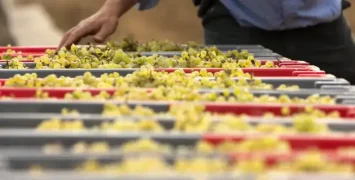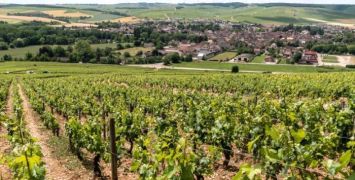Visitors enter Chablis through the turreted towers of the Porte Noël gateway, opening on to narrow stone streets and houses dating from the 14th to 16th century. St-Martin’s collegiate church, whose construction started in 1160, was one of the first French churches of Gothic design. It is a miniature copy of the cathedral of Sens. Saint Martin was known as the patron saint of travellers, and his relics are kept in the church to which he gave his name. The hospice, or Hôtel Dieu, dates from the 12th century.
The Petit Pontigny is a set of buildings, surrounded by walls, which is at the centre of all festivities and ceremonies of Chablis and its famous vineyards. Its cellar, also dating from the 12th century, is now the only original part of this property, which once belonged to the monks of Pontigny. Nearby is the St-Cosme priory, which was built in the 12th century by the monks of the Premontré order. It is said that Joan of Arc slept there, one night in February of 1429, on her way to Chinon.
Chablis Wine
Chablis produces the white wine of the same name, one of the most famous in France. All the wines are white and produced using the Chardonnay grape. It is the growing region located the furthest north and is geographically set apart from the rest of Burgundy. The vineyards here must be protected from frost by windmills, sprinkler systems and oil burners.
The River Serein flows through the area, moderating the climate. The grapes here have been grown since the Cistercian monks first started the vineyards in the 12th century.
Chablis wine is often imitated, but the imitations rarely resemble the real thing. Grown on limestone, Chablis is a crisp, steely white with flinty mineral flavours. It is brisk, fruity, and very dry, with a refreshing acidity.
There are four levels:
Grand Cru Chablis, the highest rating available, has been given to seven vineyards. These wines are rich and dry with a combination of butter, nuts and minerals. Grands crus may be matured in oak.
Premier Cru designation has been given to 30-odd vineyards in various towns around Chablis and account for about one-quarter of production. Chablis, without any other designation on the label, means a wine from any of the parishes in the Chablis district.
Petit Chablis is a light, less alcoholic wine made in the outlying parts of the district.
Côte d’Or, often called “hills of gold” or “golden slope,” is actually the abbreviation of Côte d’Orient or “eastern slope.” The best vineyards face southeast to maximize the sunlight. Côte d’Or has over 60 AOCs and thousands of growers. Villages of Côte d’Or have tended to append the name of their most famous vineyard, e.g., the town of Nuits with the vineyard of St-Georges became Nuits-St-Georges. Puligny and Chassagne both claim Montrachet.
 English
English
 Spanish
Spanish French
French German
German Norwegian
Norwegian Portuguese
Portuguese Swedish
Swedish Italian
Italian Russian
Russian Simplified Chinese
Simplified Chinese Japanese
Japanese


